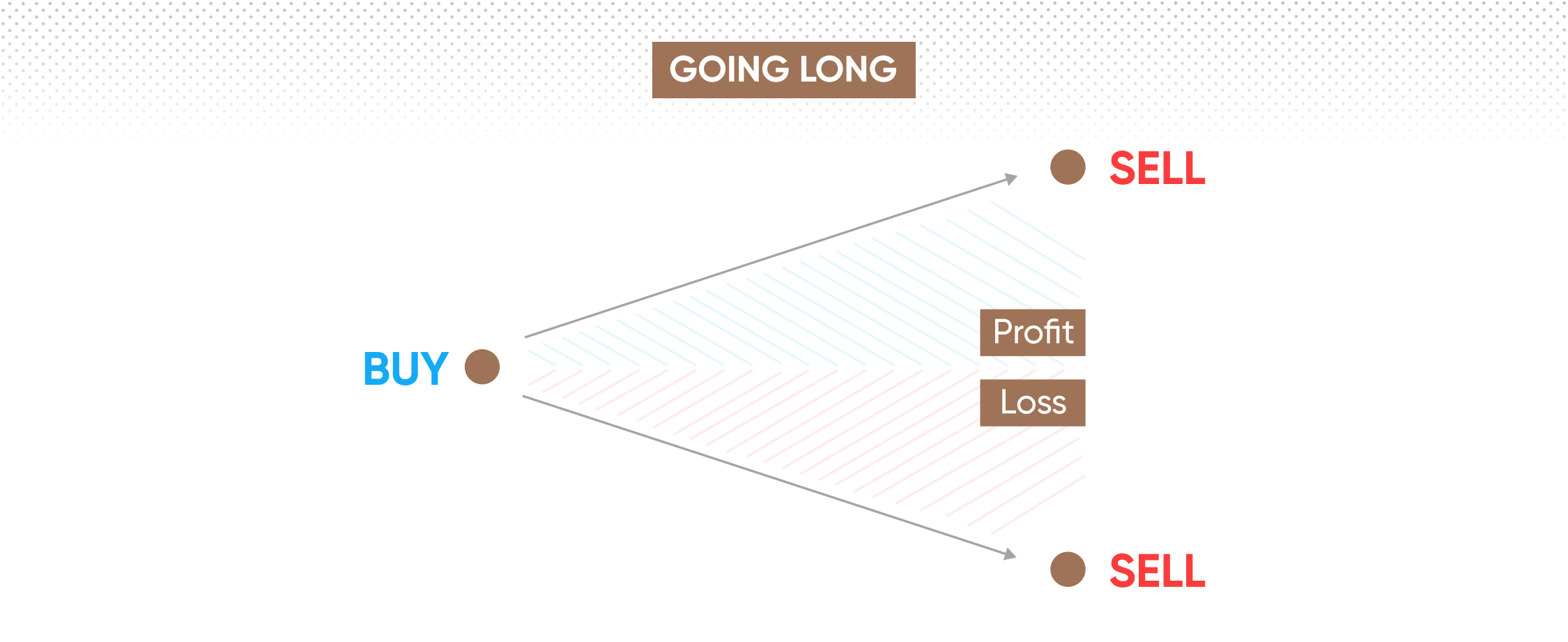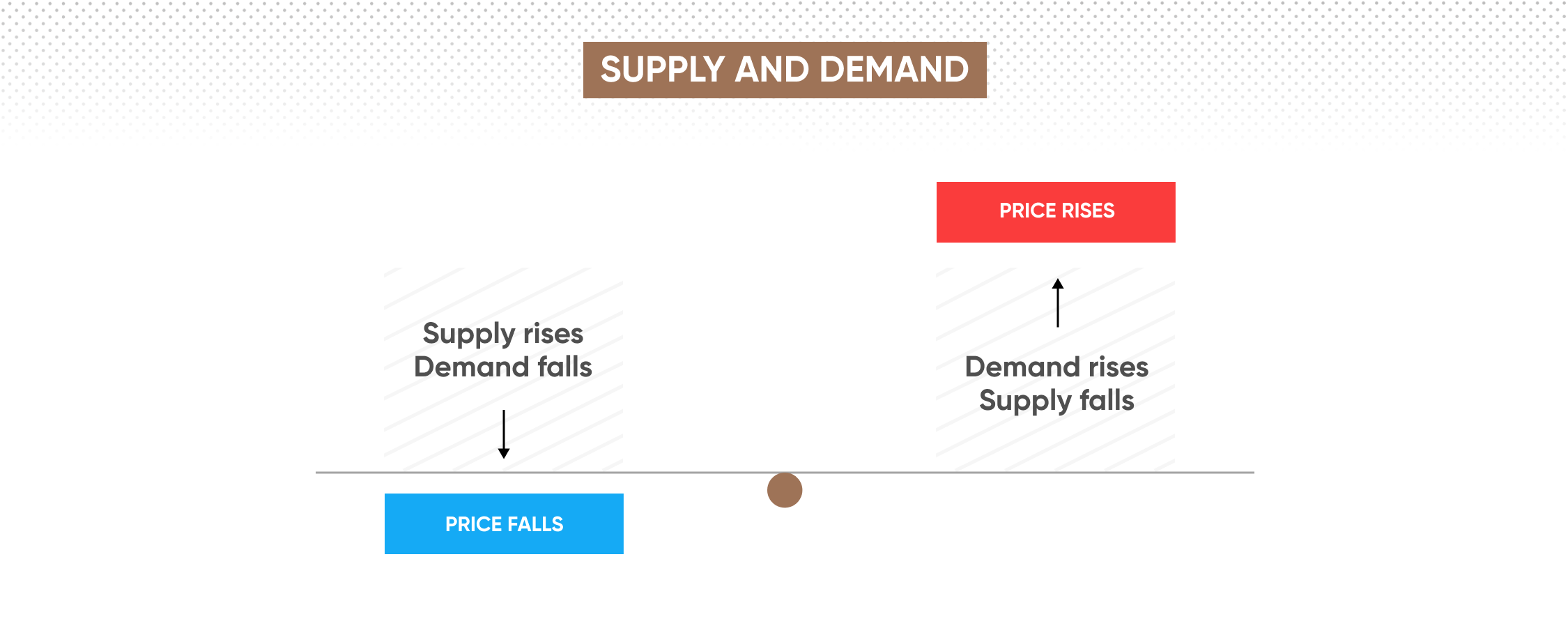What are buying and selling in trading?

They are two everyday words most English speakers could understand, but when it comes to trading, what do ‘buy’ and ‘sell’ mean? In this guide, we will look at the buy and sell definitions in the context of trading.
When a trader opens a buy position, they are essentially buying an asset from the market, and when they close their position, they sell it back to the market. If someone buys an asset, then they are highly likely to think that its price will rise and if they sell it, then the chances are they think its price will fall in the not too distant future.
Highlights
-
Buying in trading is the act of purchasing an asset in the hope that its value will increase, thus potentially making the trader a profit.
-
In trading, selling is the act of offloading an asset once it has returned the trader a sufficient profit, or if it has made a loss the trader is willing to take.
-
Buying and selling are related to both long and short positions.
Key concepts in buying and selling
Buying and selling are the primary activities in trading, and understanding key concepts such as bid and ask prices, spreads, and order books is crucial to making informed decisions in the market.
Bid and ask prices
Bid and ask prices are the prices at which buyers and sellers are willing to trade a particular asset. The bid price represents the highest price a buyer is willing to pay for an asset, while the ask price represents the lowest price at which a seller is willing to sell an asset. The difference between the bid and ask price is known as the bid-ask spread.
Spreads
The bid-ask spread is a key concept in trading. It represents the transaction cost of buying or selling an asset. The spread could vary depending on market conditions and liquidity, and traders need to consider the spread when deciding to buy or sell an asset. A narrow spread indicates high liquidity and low transaction costs, while a wide spread suggests the opposite.
Order books
An order book is a list of buy and sell orders for an asset on an exchange. The order book provides traders with a view of the market depth, showing the number of buy and sell orders at different prices. Traders could use it to analyse market sentiment and identify support and resistance levels.
How to interpret and utilise these concepts in trading
-
Considering the spread. Traders could consider the bid-ask spread when buying or selling an asset. A narrow spread indicates low transaction costs, while a wide spread may result in higher transaction costs.
-
Monitoring the order book. Monitoring the order book could provide traders with insights into market sentiment and help identify potential entry and exit points.
-
Understanding market depth. Understanding market depth could help traders identify key support and resistance levels, making it easier to identify profitable trades.
-
Staying in touch with market news. Keeping up-to-date with market news and events could help traders anticipate market movements and make informed trading decisions.
What is a long position?
In trading, taking a long position or going long means buying an asset with the expectation that its value will increase over time.
For example, if a trader takes a long position on a stock, they will buy the stock and hold it, hoping that its value will increase in the future. If the trader’s prediction is correct, they could sell the stock at a higher price and make a profit. However, if the value of the stock decreases, the trader will make a loss on their investment.

What is a short position?
Taking a short position, going short, or shorting, refers to selling a borrowed asset in the hope that its price has already peaked, its price will go back down and the trader could buy it again once the price has fallen, leaving them in profit. If the value of the asset rises, though, then the trader could be left unable to recoup their investment.

Strategies for buying and selling
Whichever trading strategy someone uses, whether it is day trading, swing trading, position trading, scalping or arbitrage, traders will buy and sell in an attempt to get the results they are looking for.
Trend following and momentum trading could also be applied to buying and selling in financial markets.
Trend following involves finding a price trend and following it, meaning a trader would buy when a price is trending upwards and sell when it trends downwards. Momentum trading, which sees traders enter based on how much momentum a trend has, would see a trader buy when the price was gaining momentum and sell when it was losing momentum.
How do buyers and sellers affect the market?

Buyers and sellers affect the market because they contribute to supply and demand. Let’s take a look and see how they do that.
How buyers have an impact on markets
When buyers enter a market, they increase the demand for an asset, which means the price rises. Buyers could be willing to pay a higher price for an asset because they believe it has value or potential for growth. As more buyers enter the market, the price of the asset increases, leading to a positive trend.
Buyers help increase market liquidity, as they provide the funds necessary for sellers to sell their assets.
When sellers come into a market, they increase the supply of an asset, causing the price to fall. Sellers could be willing to sell an asset because they either want to take profits or believe the asset has little potential for growth. As more sellers enter the market, the price of the asset decreases, leading to a negative trend.
Sellers could also help to increase market liquidity, as they provide assets that buyers could purchase.
Risks and challenges in buying and selling
Buying and selling in trading involves certain risks and challenges that traders need to be aware of. Here are some of them.
Risks
-
Market volatility. The prices of assets could fluctuate rapidly due to various factors, including global events, economic indicators, and company-specific news. High volatility could lead to sudden and unexpected losses or profits, making it difficult for traders to predict market movements accurately.
-
Liquidity risk. Being unable to buy or sell an asset at the desired price due to a lack of market liquidity is possible when trading in less liquid assets or during market disruptions. Liquidity risk could also lead to wider bid-ask spreads, which could impact trading profitability.
-
Operational risk. The risk of losses due to operational failures, including technical issues, trading errors, or fraud. These risks could lead to significant losses for traders and impact their overall trading performance.
-
Regulatory risk. Changes in government regulations or policies could impact trading operations leading to increased costs, changes in trading strategies, or restrictions on certain types of trading activities.
-
Psychological risk. The risk of emotional bias could impact trading performance. Traders could experience fear, greed, or overconfidence, which could lead to impulsive or irrational trading decisions.
Challenges
-
Information overload. Traders need to process large amounts of information to make informed trading decisions. The sheer volume of data available could be overwhelming, making it difficult for traders to filter out relevant information and make timely decisions.
-
Competition. The trading industry is highly competitive, and traders need to stay ahead of the competition to be successful. This could involve developing new trading strategies, improving trading skills, and staying up-to-date with market trends and news.
Conclusion
So, that should be buying and selling explained. In conclusion, buying and selling are at the absolute core of trading. Traders could buy an asset, or go long, and sell it, or go short. However, as simple as this might sound, there are plenty of risks when it comes to trading, regardless of whether someone wants to buy or sell. Therefore, traders still need to be careful.
Buying and selling in trading involves certain risks and challenges that traders need to be aware of. Traders need to manage these risks carefully, stay up-to-date with market trends, and develop effective trading strategies to maximise their profits and minimise their losses.
They will have to remember to do their own research, remember that markets could move against them at any time, and never trade with more money than they can afford to lose.
FAQs
How do traders know when to buy and sell?
Traders might know when to buy and sell by using things like technical and fundamental analysis, as well as by keeping up to date with financial news.
Why are buying and selling important in trading?
Buying and selling are important in trading because trading is, at its core, the act of buying and selling.